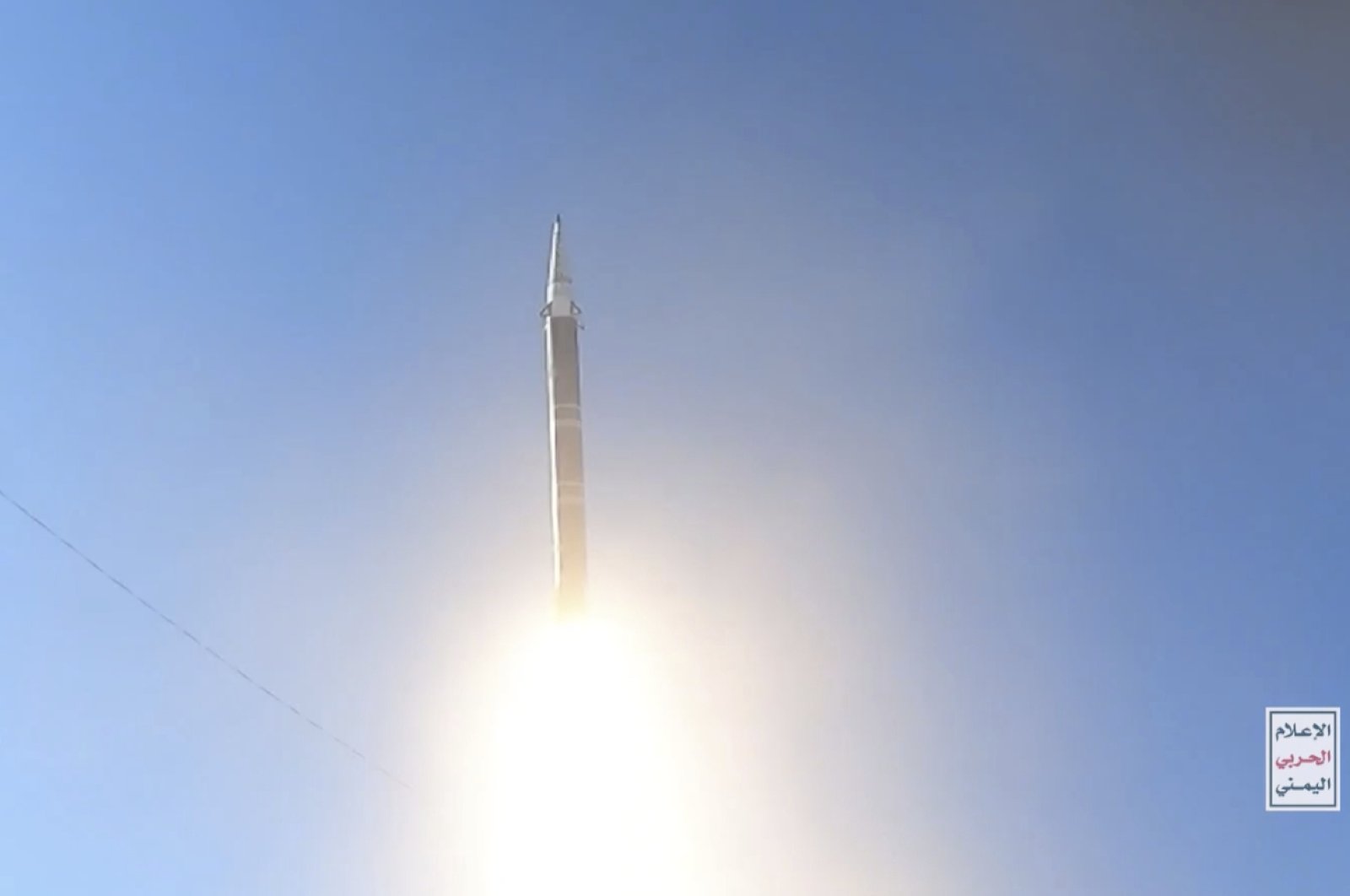
Yemen's Houthi rebels have introduced a new solid-fuel missile, the "Palestine," mirroring aspects of an earlier hypersonic-speed missile displayed by Iran.
On Monday, the rebels launched the Palestine missile, adorned with a warhead painted in the pattern of a Palestinian keffiyeh, targeting the southern Gulf of Aqaba port of Eilat in Israel.
The attack triggered air raid sirens but resulted in no reported damage or injuries.
Footage released by the Houthis late Wednesday showed the Palestine missile being elevated on a mobile launcher and swiftly ascending with plumes of white smoke – characteristic of solid-fuel missiles – trailing from its engine.
Solid-fuel missiles can be set up and fired faster than those containing liquid fuel.
That is a key concern for the Houthis as their missile launch sites have been repeatedly targeted by U.S. and allied forces in recent months over the rebels' attacks on shipping through the Red Sea corridor.
One such strike hit the Houthis even before they were able to launch their missile.
The Houthis said the Palestine is a locally made missile.
However, the Houthis are not known to possess the ability to manufacture complicated missile and guidance systems locally in Yemen, the Arab world's poorest country, which has been gripped by war since the rebels seized the capital, Sanaa, nearly a decade ago.
The Houthis have, however, been repeatedly armed by Iran during the war, despite a U.N. arms embargo.
While Iran claims it does not arm the Houthis, ships seized by the U.S. and its allies have found Iranian weaponry, missile fuel and components on board.
Iranian media reported the launch of the Palestine and described it as locally manufactured, citing the Houthis.
Design elements on the missile resemble other missiles developed by Iran's paramilitary Revolutionary Guard. That includes one called the Fattah, or "Conqueror" in Farsi. Iran unveiled the missile last year and claimed it could reach Mach 15 – 15 times the speed of sound. It also described the missile's range as up to 1,400 kilometers (870 miles). That is a little short of Eilat from Houthi-controlled areas of Yemen, but missiles can be reconfigured to boost their range.
In March, Russia's state-run RIA Novosti news agency quoted an anonymous source claiming the Houthis had a hypersonic missile.
"While we cannot say for sure what exact version the ‘Palestine’ corresponds to, we can say with high certainty that it is an advanced and precision-guided (Guard)-developed solid propellant missile provided by Iran," wrote Fabian Hinz, a missile expert and research fellow at the International Institute for Strategic Studies.
Asked about the similarity between the Palestine and its missiles, Iran's mission to the United Nations told The Associated Press (AP) that Tehran "has not engaged in any activities in contravention" of U.N. resolutions.
"Yemen’s military power has grown since the war began ... a fact rooted in the internal capacity and prowess of Ansar Allah," the mission said, using another name for the Houthis.
Hypersonic weapons, which fly at speeds higher than Mach 5, could pose crucial challenges to missile defense systems because of their speed and maneuverability.
Ballistic missiles fly on a trajectory in which anti-missile systems like the U.S.-made Patriot can anticipate their path and intercept them. The more irregular the missile’s flight path, such as a hypersonic missile with the ability to change directions, the more difficult it becomes to intercept.
China is believed to be pursuing the weapons, as is America. Russia has already used them.
It remains unclear how well the Palestine maneuvers and at what speed it travels.
Meanwhile, on Thursday, a commercial ship in the southern Red Sea near the Bab el-Mandeb Strait reported seeing explosions nearby, though no one was hurt, the British military's United Kingdom Maritime Trade Operations center said.
The private security firm Ambrey also reported the blasts. Though no one immediately claimed the attack, suspicion immediately fell on the Houthis.
The U.S. military's Central Command said the Houthis fired one ballistic missile into the Red Sea, while America and its allies destroyed nine drones and two drone boats over the last day.
"There were no injuries or damage reported by U.S., coalition, or commercial ships," it said.
